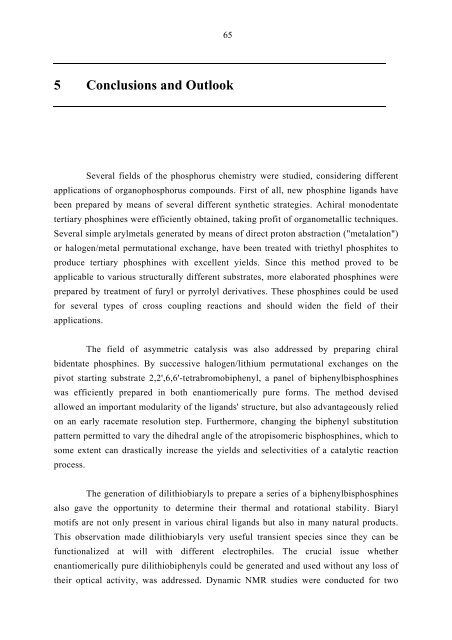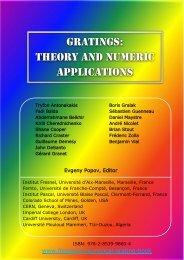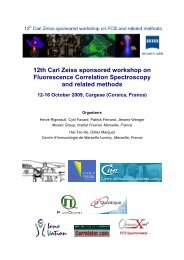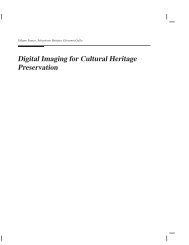My PhD dissertation - Institut Fresnel
My PhD dissertation - Institut Fresnel
My PhD dissertation - Institut Fresnel
You also want an ePaper? Increase the reach of your titles
YUMPU automatically turns print PDFs into web optimized ePapers that Google loves.
65<br />
5 Conclusions and Outlook<br />
Several fields of the phosphorus chemistry were studied, considering different<br />
applications of organophosphorus compounds. First of all, new phosphine ligands have<br />
been prepared by means of several different synthetic strategies. Achiral monodentate<br />
tertiary phosphines were efficiently obtained, taking profit of organometallic techniques.<br />
Several simple arylmetals generated by means of direct proton abstraction ("metalation")<br />
or halogen/metal permutational exchange, have been treated with triethyl phosphites to<br />
produce tertiary phosphines with excellent yields. Since this method proved to be<br />
applicable to various structurally different substrates, more elaborated phosphines were<br />
prepared by treatment of furyl or pyrrolyl derivatives. These phosphines could be used<br />
for several types of cross coupling reactions and should widen the field of their<br />
applications.<br />
The field of asymmetric catalysis was also addressed by preparing chiral<br />
bidentate phosphines. By successive halogen/lithium permutational exchanges on the<br />
pivot starting substrate 2,2',6,6'-tetrabromobiphenyl, a panel of biphenylbisphosphines<br />
was efficiently prepared in both enantiomerically pure forms. The method devised<br />
allowed an important modularity of the ligands' structure, but also advantageously relied<br />
on an early racemate resolution step. Furthermore, changing the biphenyl substitution<br />
pattern permitted to vary the dihedral angle of the atropisomeric bisphosphines, which to<br />
some extent can drastically increase the yields and selectivities of a catalytic reaction<br />
process.<br />
The generation of dilithiobiaryls to prepare a series of a biphenylbisphosphines<br />
also gave the opportunity to determine their thermal and rotational stability. Biaryl<br />
motifs are not only present in various chiral ligands but also in many natural products.<br />
This observation made dilithiobiaryls very useful transient species since they can be<br />
functionalized at will with different electrophiles. The crucial issue whether<br />
enantiomerically pure dilithiobiphenyls could be generated and used without any loss of<br />
their optical activity, was addressed. Dynamic NMR studies were conducted for two













